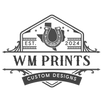Embarking on the journey of 3D printing is an exciting venture for hobbyists and professionals alike. As a beginner, you might find yourself overwhelmed by the various components and steps involved in getting your 3D printer up and running. Fear not! We've compiled a handy checklist to make the process as seamless as possible. Let's dive in!
1. Choose the Right Printer
Before setting up, ensure you've selected a printer that suits your needs. There are numerous models available, ranging from entry-level to professional-grade. Consider factors like print size, material compatibility, and budget when making your decision.
2. Unboxing and Setup
Start by carefully unboxing your 3D printer. Take inventory of all the parts to ensure nothing is missing. Follow the manufacturer's assembly instructions closely, as each model may have unique steps.
3. Level the Bed
Leveling the print bed is crucial for successful prints. An uneven bed can lead to print failures or poor quality. Use a piece of paper to gauge the distance between the nozzle and the print bed, adjusting the screws accordingly until you achieve the correct positioning.
4. Load Filament
Once your printer is set up and the bed is level, it's time to load the filament. Make sure the filament size matches your printer specifications, typically 1.75mm or 3mm. Heat the nozzle to the recommended temperature, then carefully feed the filament through the extruder until it is properly loaded.
5. Calibrate the Printer
Calibration is essential for accurate prints. This involves setting the correct steps per unit for the axes, fine-tuning the extruder, and running test prints to ensure everything functions smoothly.
6. Start a Test Print
Select a simple model to test your setup. This will help identify any issues that might need adjusting, such as bed adhesion or flow rate. Don’t be discouraged by initial failures—they're a part of the learning process!
7. Maintenance and Upkeep
Regular maintenance will extend the lifespan of your printer and improve the quality of your prints. Keep the components clean and well-lubricated, routinely check for worn parts, and recalibrate as needed.
Bonus Tip: Essential Accessories
Consider investing in accessories that enhance your 3D printing experience. One such product is the Lyman Type Prep Tools Holder, perfect for organizing your prep tools efficiently. This helps maintain a tidy workspace and ensures that all your essential tools are within arm's reach.
By following this checklist, you'll be well-equipped to set up your first 3D printer and embark on your printing journey with confidence. For more tools and support, visit WM Prints.
Happy Printing!





